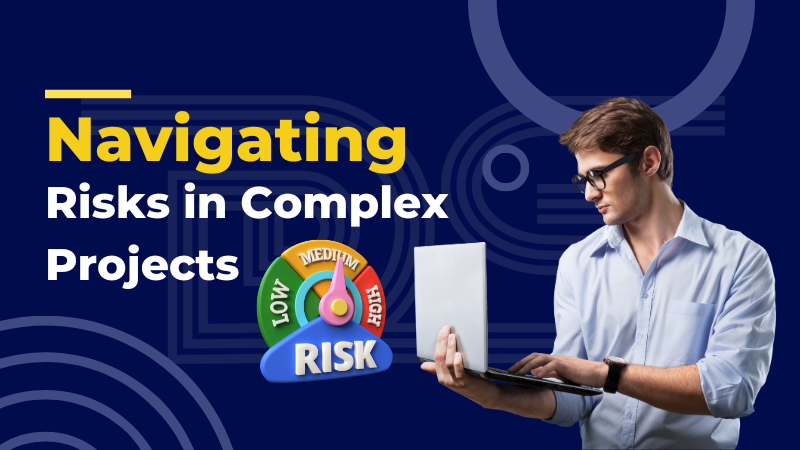

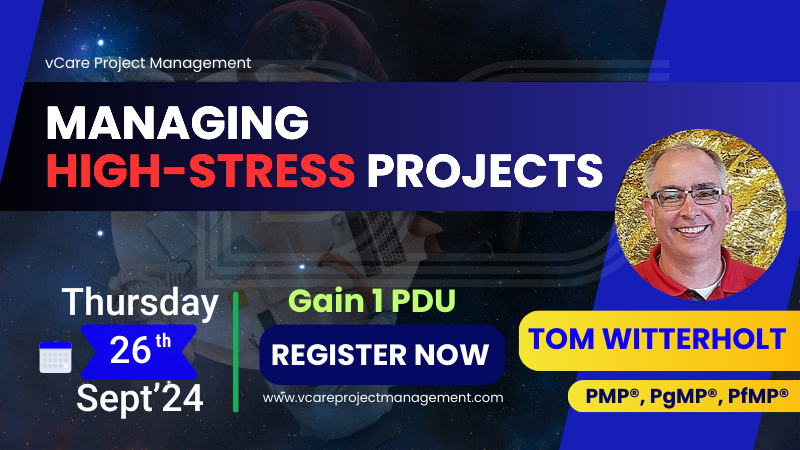
Managing High-Stress Projects – Insights from Tom Witterholt | Dharam Singh | vCare Project Management | Q&A | 1 PDU
Managing High-Stress Projects | Tom Witterholt | vCare PgMP & PfMP Success Story
Join vCare Project Management for an exclusive webinar featuring Tom Witterholt, a highly accomplished Senior Program Manager with over 34 years of experience in the aerospace and defense sectors from Albuquerque, New Mexico, United States. As the keynote speaker, Tom will share his extensive expertise in managing high-stress projects.
Discussion Topics include but are not limited to,
+ Developing Strategic Thinking: Essential Skills and Learning Paths for Leaders
+ Transforming Underperformance: Leadership Techniques for Transforming Low-Performing Team Members
+ The Strategic Role in Organizational Change: How Strategy Drives Transformation
+ Navigating New Leadership Roles: Strategies for Success in Unfamiliar Territories
+ Interpreting Key Performance Indicators: Understanding and Addressing Misaligned Metrics
Attendees will earn 1 PDU and receive special discount codes for upcoming PMP®, PgMP®, and PfMP® programs. Don’t miss this chance to learn from an industry expert and take your project management skills to the next level.
🔗 Reserve your spot now: https://bit.ly/4fFJTTn
Session Date: Thursday, 26th September 2024
Session Time: 08:30 AM – 09:30 AM (HST) / 10:30 AM – 11:30 AM (AKDT) / 11:30 AM – 12:30 PM (PDT) / 12:30 PM – 01:30 PM (MDT) / 01:30 PM – 02:30 PM (CDT) / 02:30 PM – 03:30 PM (EDT) / 07:30 PM – 08:30 PM (BST) / 08:30 PM – 09:30 PM (CEST) / 09:30 PM – 10:30 PM (AST)
🚀 Elevate Your Project Management Career:
– Book an obligation-free consultation session on Project Management Career, training, and certifications: http://talktodharam.com
– Discover training offers and certification discounts: https://bit.ly/3jWVepD
– Stay updated with our Q&A series and certification success stories by subscribing to the vCare Project Management YouTube channel at https://bit.ly/2YF0wJl
– Follow my podcasts and interviews with Project Management Experts on YouTube at https://bit.ly/2NDY8wd
#HighStressProjects #ProjectManagement #FreeWebinar #PgMP #PfMP #PMI #LeadershipDevelopment #StrategicThinking #TransformationalLeadership #OrganizationalChange #PerformanceImprovement #LeadershipStrategies #ProgramManagement #DefenseIndustry #AerospaceSector #TeamManagement #StrategicLeadership #MetricsAnalysis #LeadershipSuccess #ChangeManagement #LeadershipExcellence #ProjectSuccess #ProjectLeadership #ProjectPlanning #ProjectDelivery #ProjectPortfolio #StressManagement #CrisisManagement #RiskManagement #PgMPCourse #PgMPTraining #PfMPCertification #PfMPCourse #AskDharam #DharamSingh #VcareProjectManagement
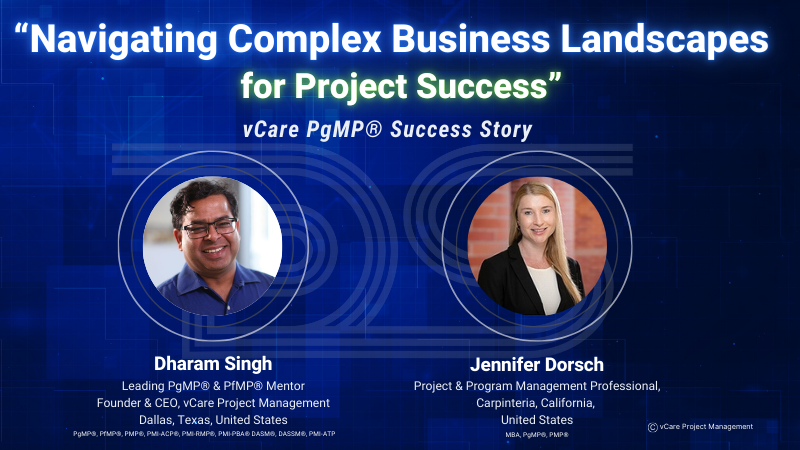
Navigating Business Complexity for Project Success | Q&A with Jennifer Dorsch & Dharam Singh
Navigating Complex Business Landscapes for Project Success | Q&A | Jennifer Dorsch | Dharam Singh
🔍 Key Takeaways:
– How do you balance strategic alignment and operational flexibility in managing large-scale transformation projects?
– How effectively have you seen organizations blend predictive and agile practices to address diverse project challenges and needs? Are hybrid management frameworks gaining traction as a fit-for-purpose approach?
– Can you share a successful case where agile and traditional project management methods were integrated into a large-scale project?
– In the face of technological disruption, why do you think emerging leadership imperatives embrace agility and skill to thrive in an uncertain and changing environment?
– What are the key factors for fostering innovation and adaptability in project teams?
🎥 Watch now: https://www.youtube.com/watch?v=OPMUWIidYrU
🚀 Seize the opportunity to Elevate Your Project Management Career:
– Register for my upcoming PMI Certification Success Story Webinars: https://bit.ly/4fJdX0c / https://bit.ly/4fFJTTn
– Book an obligation-free consultation session on Project management Career, training, and certifications: http://talktodharam.com
– Discover training offers and certification discounts: https://bit.ly/3jWVepD
– Stay updated with our Q&A series and certification success stories by subscribing to the vCare Project Management YouTube channel at https://bit.ly/2YF0wJl
– Follow my podcasts and interviews with Project Management Experts on YouTube at https://bit.ly/2NDY8wd
#ProjectManagement #Leadership #Innovation #Agility #BusinessSuccess #AgileLeadership #Transformation #Innovation #HybridManagement #LeadershipDevelopment #BusinessStrategy #OrganizationalAgility #ChangeManagement #ProjectSuccess #TeamAdaptability #StrategicAlignment #OperationalExcellence #EmergingTrends #PgMP #PfMP #PMP #AskDharam #DharamSingh #VCareProjectManagement
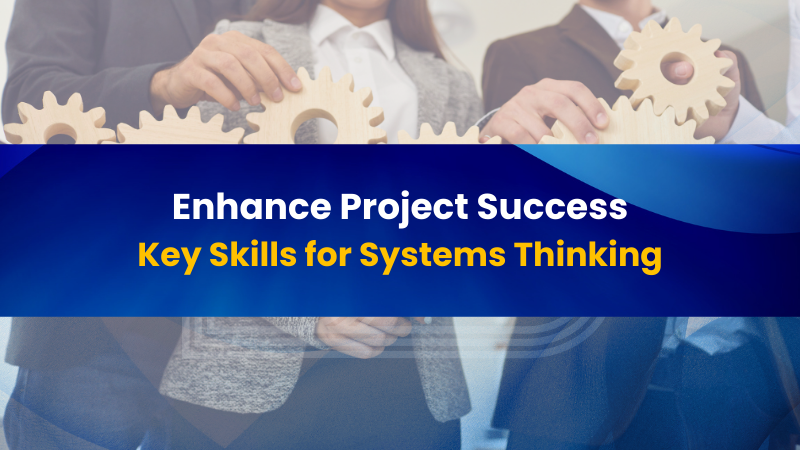
Key Systems Thinking Skills for Project Success | Holistic Project Management | vCare
Enhance Project Success: Key Skills for Systems Thinking
As a project manager, you play a crucial role in the success of a project. A project is a system of interdependent and interacting domains of activity. Systems thinking entails a holistic view of how project parts interact with each other and external systems. Systems are constantly changing, requiring your consistent attention to internal and external conditions. Your responsiveness to system interactions allows your project teams to leverage positive outcomes.
The following skills support a systems view of the project:
– Empathy with the business areas
– Critical thinking with a big-picture focus
– Challenging assumptions and mental models
– Seeking external review and advice
– Use of integrated methods, artifacts, and practices so there is a common understanding of project work, deliverables, and outcomes
– Use of modeling and scenarios to envision how system dynamics may interact and react
– Proactive management of the integration to help achieve business outcomes

Enhance project success with key systems thinking skills—holistic project management in action.
By honing these skills, project teams can enhance collaboration, adaptability, and, ultimately, project success. Remember, these skills are not just beneficial; they are essential for your professional growth and the success of your projects.
🚀 Elevate Your Project Management Career:
– Register for my upcoming PMI Certification Success Story Webinars: https://bit.ly/3Lpjifb / https://bit.ly/4fJdX0c
– Book an obligation-free consultation session on Project management Career, training, and certifications: http://talktodharam.com
– Discover training offers and certification discounts: https://bit.ly/3jWVepD
– Stay updated with our Q&A series and certification success stories by subscribing to the vCare Project Management YouTube channel at https://bit.ly/2YF0wJl
– Follow my podcasts and interviews with Project Management Experts on YouTube at https://bit.ly/2NDY8wd
#SystemsThinking #ProjectManagement #SkillsDevelopment #PMBOK #PMBOK7 #PMP #Empathy #Innovation #Agile #Waterfall #ProjectLeadership #HolisticProjectManagement #CriticalThinking #PMPCertification #PMPExam #PMPTraining #BusinessAnalysis #ChangeManagement #ProjectDelivery #ProjectSuccess #ProjectTeams #SystemsDynamics #BusinessOutcomes #HybridProjectManagement #AskDharam #DharamSingh #VCareProjectManagement
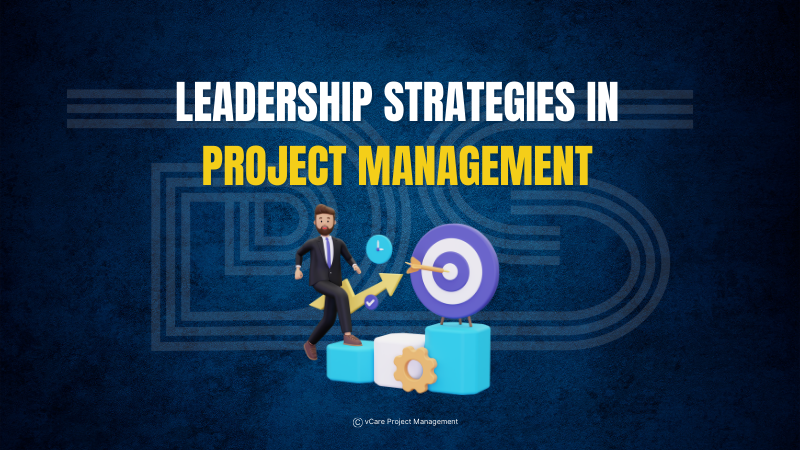
Leadership Strategies in Project Management | PMBOK 7th Edition | vCare | PMI-ATP

Master leadership strategies in project management with insights from PMBOK 7th Edition.



In the realm of project management, especially for complex projects, understanding and mitigating risks is crucial for success. Here are some key areas to focus on:
+ Stakeholder Response Integration: Anticipate stakeholder reactions to risks and proactively prepare strategies to address their concerns.
+ Monitoring Project Pace: Monitor project progress closely and be ready to intervene to maintain the timeline.
+ Leveraging Individual Competencies: Utilize the unique strengths of each team member to boost overall project performance.
+ Managing Interpersonal Dynamics: Foster effective communication and conflict resolution to ensure smooth team interactions.
+ Clarifying Contractual Agreements: Clearly define expectations, responsibilities, and deliverables in contracts to avoid misunderstandings.
+ Aligning with Organizational Culture: Understand and adapt to the organizational culture to facilitate smoother project implementation.
+ Effective Change Management: Implement robust change management processes to handle changes affecting stakeholders efficiently.
For more insights and to enhance your risk management skills while managing complex projects, join our PMI-RMP® Online Mentoring Programs: https://bit.ly/4bqgTws
🚀 Elevate Your Project Management Career:
– Register for my upcoming PMI Certification Success Story Webinars: https://bit.ly/4aVhrd6 / https://bit.ly/3QeVhKF
– Book an obligation-free consultation session on Project management Career, training, and certifications: http://talktodharam.com
– Discover training offers and certification discounts: https://bit.ly/3jWVepD
– Stay updated with our Q&A series and certification success stories by subscribing to the vCare Project Management YouTube channel at https://bit.ly/2YF0wJl
– Follow my podcasts and interviews with Project Management Experts on YouTube at https://bit.ly/2NDY8wd
#ProjectManagement #RiskManagement #ChangeManagement #ProjectRiskManagement #PMIRMP #StakeholderManagement #ComplexProjects #ProjectIntegration #TeamCompetencies #ContractManagement #OrganizationalCulture #ProjectStakeholders